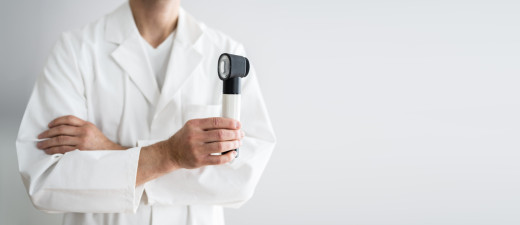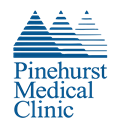February 5th, 2024

By: Juliann S. Wallner, M.D., board-certified dermatologist
The American Academy of Dermatology predicts that 1 in 5 people will be diagnosed with skin cancer in their lifetime. The good news? When caught early, skin cancer is highly treatable.
A skin check is one of the best ways to identify skin cancers.
During a skin check, a board-certified dermatologist looks for evidence of sun damage, precancerous lesions such as actinic keratoses and atypical moles, and skin cancers such as basal cell carcinoma, squamous cell carcinoma and melanoma. They do this by inspecting the skin from the scalp to the toes, including the nails. If needed, a dermatologist will use a tool called a dermatoscope, a magnified and polarized instrument that is used to get a closer look by visualizing the outer surface of the skin (the epidermis) and the layers just beneath it.
In total, a skin check takes about 10 – 15 minutes, if you’ve never had atypical moles or skin cancer.
It is important to properly prepare for a skin check. To have a thorough check, a dermatologist may ask their patients to do the following:
- Avoid wearing makeup: Bring a makeup remover or come to your appointment without makeup to ensure the dermatologist can properly inspect your face.
- Remove nail polish: Skin cancer can show up on any part of the body, including your nails. It is important to remove fingernail and toenail polish before your appointment.
- Wear your hair down: The dermatologist will check you from your scalp to your toes so those with long hair should wear it down or bring a brush to take your hair down for your appointment. It is also important to make sure the hair is free of heavy hairspray as that can make the skin check more difficult.
- You’ll be wearing a gown: To best check the skin from head to toe, you will be asked to wear a gown to ensure suspicious spots are not overlooked.
- Biopsy will occur the same day: If an abnormality is found during a skin check, a biopsy will be performed in the same visit. The dermatologist will numb the skin, shave off the abnormal lesion and send it to pathology for testing. If skin cancer is detected your physician will contact you and explain the type of skin cancer and treatment options.
- Bring photos: Taking photos of any moles that are new or changed to share with your doctor can also be a great way to prepare for your exam.
Routine skin checks are essential to finding skin cancer in its earliest stages. The earlier it’s caught, the more treatable it can be.
Dr. Jullian S. Wallner is a board-certified dermatologist at Pinehurst Medical Clinic providing medical and cosmetic dermatology care.
Back





